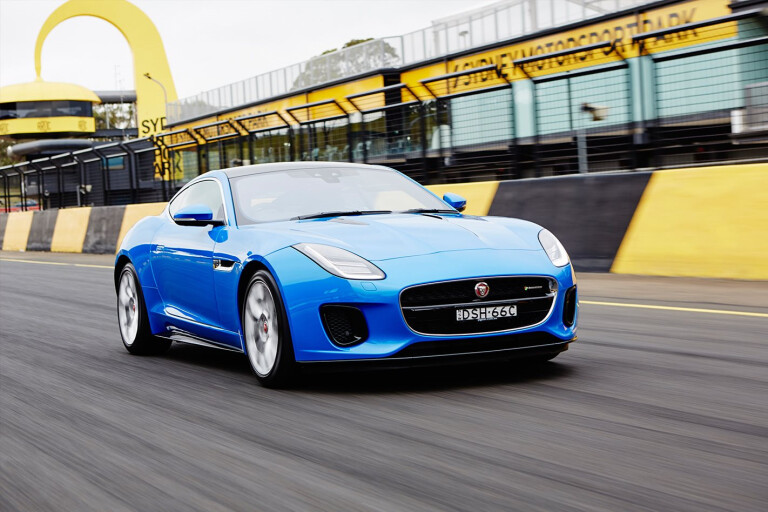
WHAT IS IT?
A more affordable entry point to the now 32-strong Jaguar F-Type sportscar line-up, offered in both coupe and convertible body styles.
WHY WE’RE DRIVING IT
Previously the F-Type was available only with supercharged V6 and V8 petrol engines; this new model sees the introduction of 2.0-litre four-cylinder power.

RIVALS
Audi TT S quattro; Porsche Cayman/Boxster; Mercedes-Benz SLC300
VERDICT
A worthy addition to the line-up, albeit with a distinctly different character to the V6 and V8 models. Likable, chuckable, with performance that will be ample for most.
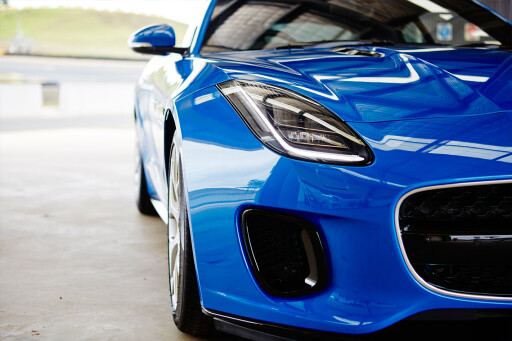
PLUS: Agility; feedback and interaction; relative affordability; consumption
MINUS: Options that should be standard; cost of options; infotainment system not cutting edge; pack light
THE WHEELS REVIEW
RATHER than question the legitimacy of Jaguar’s decision to fit a 2.0-litre turbo four-pot to its F-Type, maybe we should instead be asking: “What took you so long?”
Jaguar’s rivals in this segment have embraced turbo fours for about as long as anyone can remember. The Audi TT S, BMW Z4, and Mercedes-Benz SLK and subsequent SLC have always relied on four-pot power to achieve sales volumes. The Jaguar’s two-seater rivals from Porsche, meanwhile, are now 2.0-litre turbo fours exclusively.
Besides, it’s not as if Jaguar has just slipped in a limp-wristed, barely boosted four to cynically create a hairdresser’s special. Fact is, the Ingenium engine installed here is in a way more muscular state of tune than it appears anywhere else in the British manufacturer’s line-up.
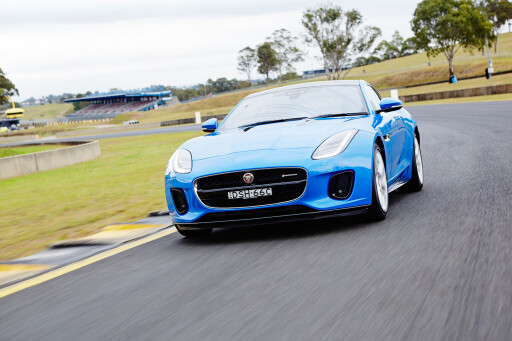
Outputs rise from the 177kW/340Nm unit offered in XE, XF and F-Pace, to a way more tempting 221kW, backed by 400Nm available from just 1500rpm. Credible sportscar outputs then, and only 29kW/50Nm short of the existing base blown V6 model that sits above the new model.
Stands to reason, then, that the claimed 0-100km/h performance only slackens by less than half a second, now 5.7sec. Buyers eyeing the new F-Type entry point may care that it uses a claimed 16 percent less fuel than the 250kW V6, now 7.2L/100km; they’ll almost certainly be interested in the price, which carves around $12K off what was the previous entry point.
Standard equipment includes 18-inch alloy wheels, leather and suede/cloth sports seats, leather-wrapped steering wheel, aluminium trim, climate control, keyless ignition and an 8-inch infotainment touchscreen. Six airbags are standard in the coupe; four in the convertible and autonomous emergency braking is included. There are some notable optional extras though, including a reversing camera, blind spot monitoring and lane keeping assist. LED headlights with DRLs are also on the options list at this level; elsewhere in the range they are now standard.
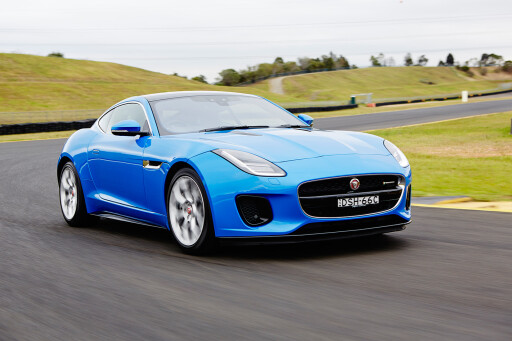
From a driver’s point of view, though, there’s still plenty to like, although it helps if you focus on the new model as a single entity, rather than make constant comparisons with its bigger brothers. Although I’ll contradict myself on that for a moment and point out that the four-pot hangs around 52 less kilos over the nose compared to the V6, which allowed the chassis engineers to wind back the spring rates by four percent at the front and three percent at the rear.
In theory that should bring a small gain in ride compliance; I couldn’t discern a difference without a back-to-back comparison. I’d also wager that the 19-inch rubber fitted to our test cars, as part of the R-Dynamic package (which adds around $7800, and more than half F-Type buyers tend to go for) makes a more perceptible difference to ride. If you prioritise comfort, stick with the standard 18s, but the ride is not harsh or uncomfortable on the bigger rubber.
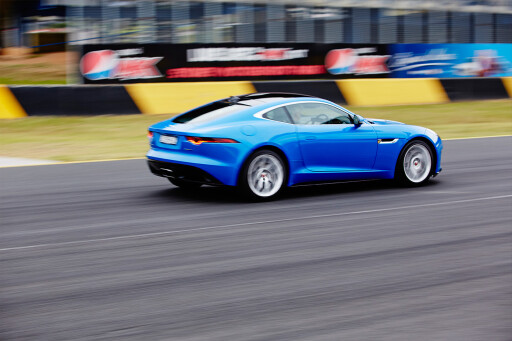
There’s an immediacy and eagerness to the front end that makes it easy to form a quick bond with the most junior F-Type. Its nose rails towards an apex with an intuitiveness that’s as natural as the arc of the wheel input that takes you there. The exhaust is switchable if you’ve ticked that option box ($270), but I suspect most owners will leave it open, because things are a little tame in the vocals department with it shut.
There’s also a final layer of mechanical polish missing from the engine in this installation; not a major criticism, it just comes off as little more industrial than expected when you’re stroking it around in normal driving. Importantly, though, it feels amply torque-rich and lag-free. Given a more free rein, it growls agreeably and salutes a sharp lift-off with a rapid volley of pops that are well intentioned, if a fraction on the contrived side.
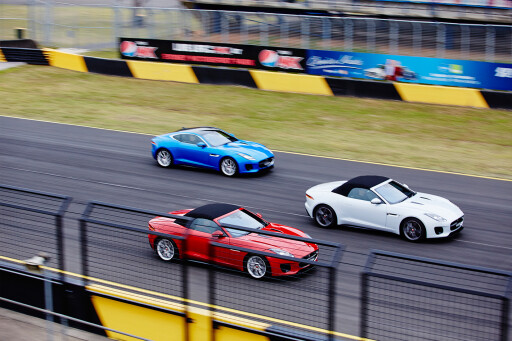
Fact is, the engine delivers a more involving performance when you can experience it with the roof down, which goes a long way to making the convertible, to my thinking at least, the more rounded and appealing offering here. Rigidity losses are marginal, the roof insulates superbly when it’s up, and there’s a slice of duality and seduction the coupe can’t quite match. Not the purists’ choice − that’s what the supercharged V6 and V8 coupes are for − but worth the extra $7800 it commands.
SPECS
Model: 2018 Jaguar F-Type 2.0-litre coupe
Engine: 1988cc 4cyl, dohc, 24v, turbo
Max power: 221kW @ 5500rpm
Max torque: 400Nm @ 1500-4000rpm
Transmission: 8-speed automatic
Weight: 1521kg
0-100km/h: 5.7sec
Fuel consumption: 7.2L/100km
Price: $107, 012
On sale: Now



COMMENTS